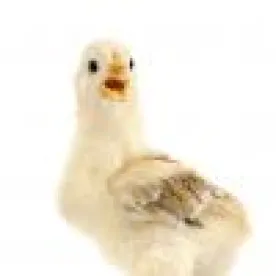On June 10, the Agricultural Marketing Service (AMS), which administers the Shell Egg Surveillance Program (a mandatory inspection program for shell egs), published a proposed rule that would streamline the importation of table eggs, hatching eggs, and inedible liquid eggs. The proposed rule is intended to shorten the importation process by requiring that applications for inspection be submitted electronically.
This proposed rule conforms to Executive Order 13659, which aims to streamline the import/export process by using the International Trade Data System (ITDS). ITDS allows importers and exporters to complete a single electronic report that will distribute the appropriate data to relevant agencies. The goal of this streamlined process is to not only reduce cargo processing time, but also to increase the safety of the US public by identifying unsafe, dangerous, or prohibited cargo. Thus, AMS will integrate its system into ITDS to reduce processing time and increase safety by identifying restricted eggs that may contain dirty or cracked shells, leaking eggs, and eggs with interior meat or blood spots.
In a related measure, the USDA announced for the first time in a decade that it will allow imported pasteurized eggs from a European nation: The Netherlands. Prior to this announcement, only Canada was certified to export liquid, dried, and frozen eggs to the United States. The Netherlands was previously certified to export pasteurized egg products to the United States in 1987 but voluntarily stopped. In 2014, the Netherlands requested reinstatement. Subsequently, the USDA’s Food Safety and Inspection Service reassessed the laws, regulations, and inspection procedures in the Netherlands and conducted an on-site audit June 2–26, 2014. The review procedures confirmed that “The Netherlands’ processed egg products inspection system continues to be equivalent and to employ the necessary verification activities to result in safe product.” The final report on the Netherlands’ reinstatement can be found here.
Both initiatives take place in an unusual context. Since December 2014, the United States has dealt with possibly the worst outbreak of avian flu to date. In late December 2014, because of highly pathogenic avian influenza (HPAI) present in 16 states, the Animal and Plant Health Inspection Service (APHIS) could no longer certify that the United States was HPAI free. As a result, the European Union and 29 other countries restricted poultry imports. China also banned US poultry because of the HPAI outbreak. According to the USDA, HPAI is deadly to poultry fowl but is not a public health threat to humans. Three strains have been found: H5N8, H5N2, and H5N1, and 33 million total birds are expected to be killed. In April 2015, Wisconsin and Minnesota declared a state of emergency. Iowa, the nation’s top egg-producing state, also discovered a major outbreak in egg-laying chickens, which prompted the euthanization of more than 5.3 million hens. Iowa declared a state of emergency in May. As the outbreak continues to spread, the USDA approved the use of $330 million in emergency funds to quell the outbreak.
According to the American Bakers Association, prices for eggs for use in commercial food manufacturing and bakeries has increased more than 200% in recent months. Members of the association have not been able to acquire enough eggs to conduct their commercial businesses, and some have resorted to buying shell eggs and cracking them individually. At least one grocery store has limited egg purchasing to three cartons per customer to discourage commercial manufacturers from buying shell eggs in bulk.
In light of the bird flu and looming egg shortage crisis, the proposed rule to streamline the importation of table eggs, hatching eggs, and inedible liquid eggs has broader implications than conformance with Executive Order 13659. The addition of the Netherlands as an approved importer of pasteurized eggs is hoped to also ease the growing supply shortage in the United States. Additionally, some state and federal officials opine that the bird flu will begin to dissipate as summer temperatures increase. Collectively, these measures may serve to mitigate the already significant effects of the HPAI outbreak.



 />i
/>i